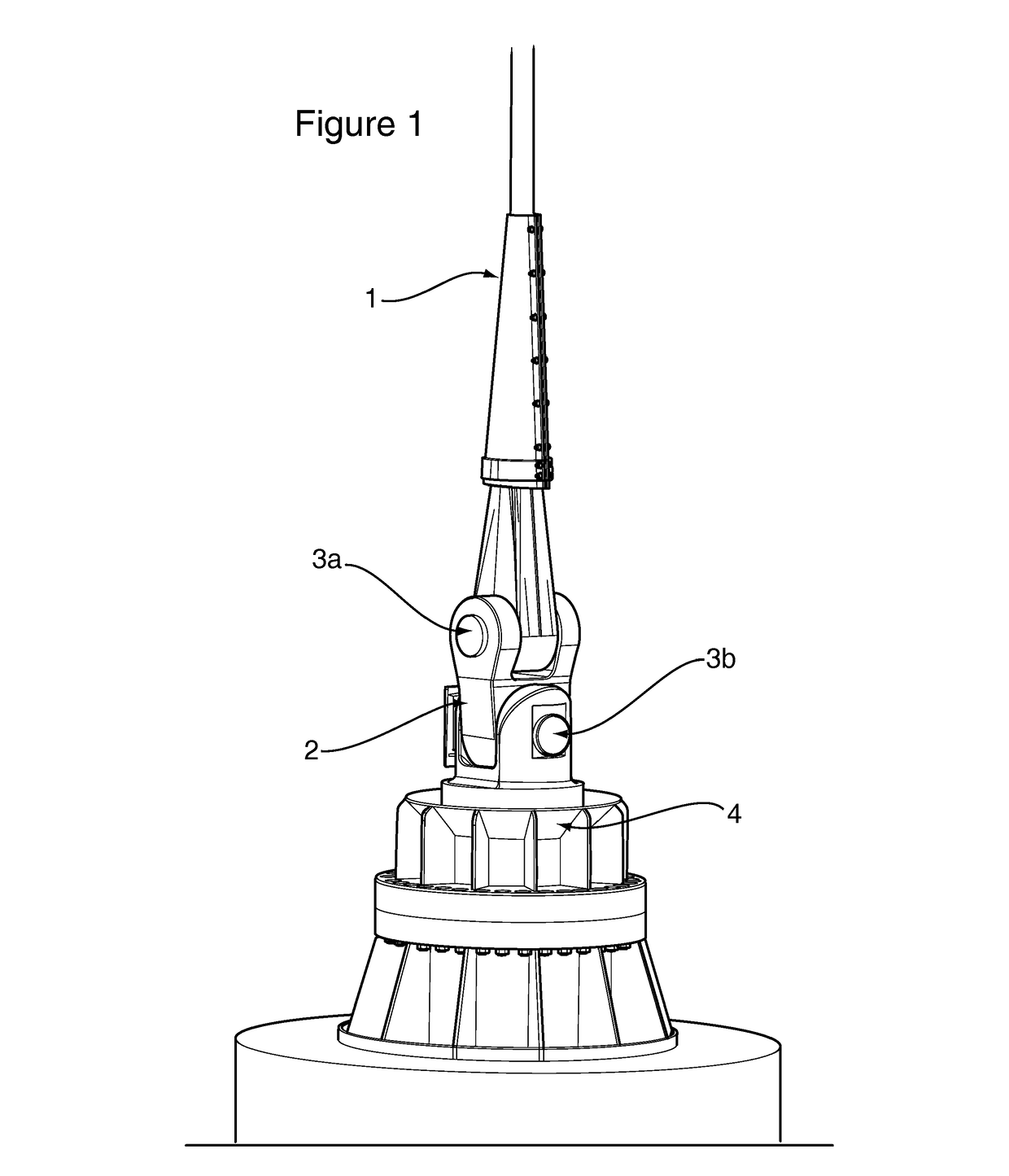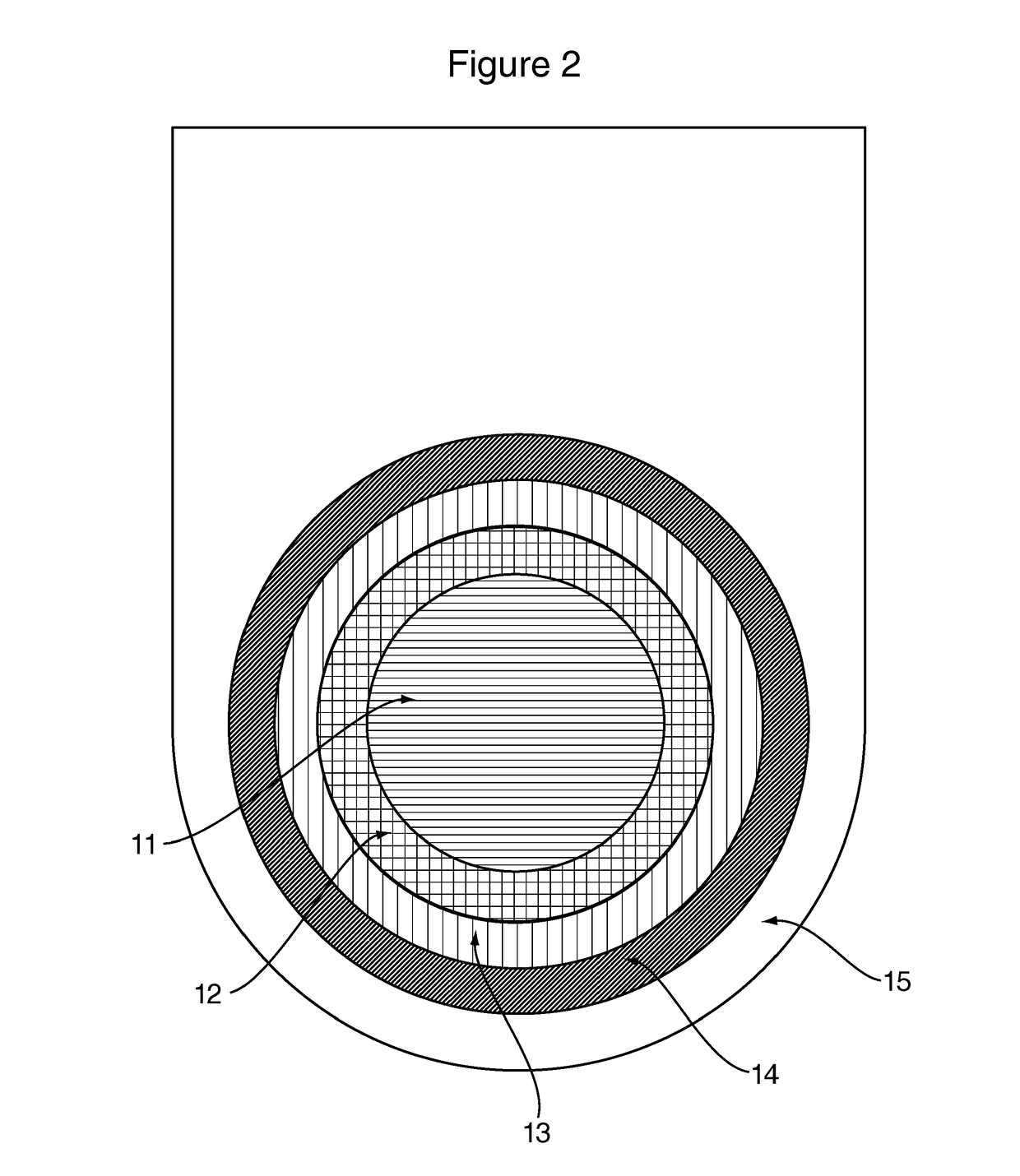Bearing assembly for an axially loaded member
a technology of bearing assembly and axial load, which is applied in the direction of bearings, shafts, anchors, etc., can solve the problems of most fatigue damage to the chain link, bending fatigue in the chain link, and the point of connection to the vessel, so as to reduce the cyclic bending stress, improve the fatigue performance of the structure and mooring line, and reduce the effect of rotational stiffness
- Summary
- Abstract
- Description
- Claims
- Application Information
AI Technical Summary
Benefits of technology
Problems solved by technology
Method used
Image
Examples
Embodiment Construction
[0070]The present invention relates to a system used in the offshore renewables or oil and gas industries for providing articulation at the end of a mooring line or a riser. The design uses a nested rubber segment and orthogonal cylindrical bearings to provide articulation with low resistance at both small and large oscillation angles. In particular, the present invention provides a compliant bearing.
[0071]FIG. 1 shows a general arrangement of a typical mooring tether connection that would be compatible with this invention. The tether 1, is connected to a seabed foundation pile 4 via an H-link 2 and two pins 3a and 3b oriented 90 degrees to each other. The compliant bearings 10 surround the pins 3a and 3b and thereby provide a range of motion in multiple directions.
[0072]FIG. 2 shows a cross section view of a compliant bearing 10. The invention is designed for absorbing small oscillations about all axes with the rubber (elastomeric) element, and large oscillations about all axes wit...
PUM
 Login to View More
Login to View More Abstract
Description
Claims
Application Information
 Login to View More
Login to View More - R&D
- Intellectual Property
- Life Sciences
- Materials
- Tech Scout
- Unparalleled Data Quality
- Higher Quality Content
- 60% Fewer Hallucinations
Browse by: Latest US Patents, China's latest patents, Technical Efficacy Thesaurus, Application Domain, Technology Topic, Popular Technical Reports.
© 2025 PatSnap. All rights reserved.Legal|Privacy policy|Modern Slavery Act Transparency Statement|Sitemap|About US| Contact US: help@patsnap.com



